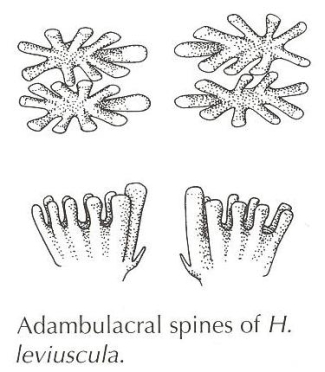In British Columbia, following Lambert's
Sea Stars of British Columbia, Southeast Alaska and Puget Sound we presently recognize three subspecies of
Henricia leviuscula
1) Henricia leviuscula annectens
2) Henricia leviuscula leviuscula
3) Henricia leviuscula spiculifera
We provide atlas pages for each. However, Lambert (pers. comm. 2012) indicates that the taxonomy of this genus is in flux and relationships between original published names and the various genetic entities require further work. A recent paper by Eernisse et al. (2010) addresses this species and groups several previous subspecies as H. leviuscula.(Stimpson 1857). For more details on this taxonomy, see: Eernisse, Douglas, Megumi Strathmann and Richard Stathmann. 2010. A brooding seastar (Asteroidea) from the coastal northeastern Pacific. Zootaxa 2329: 22-36.
